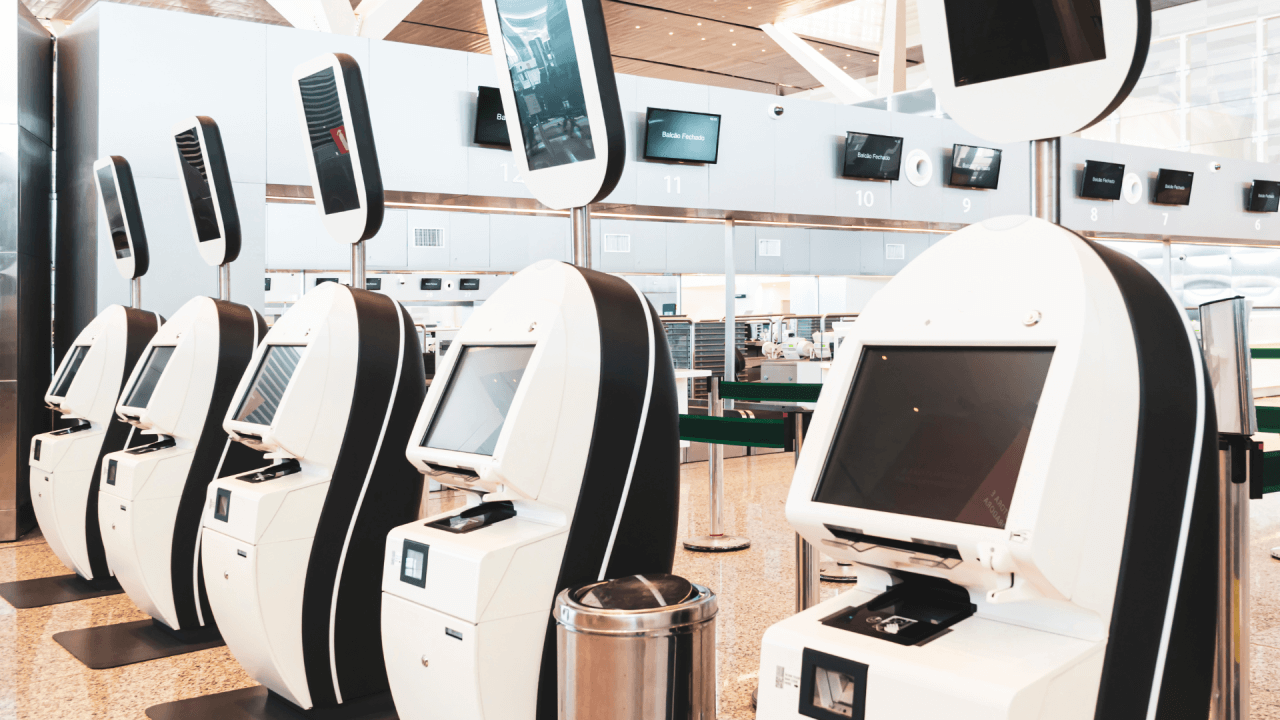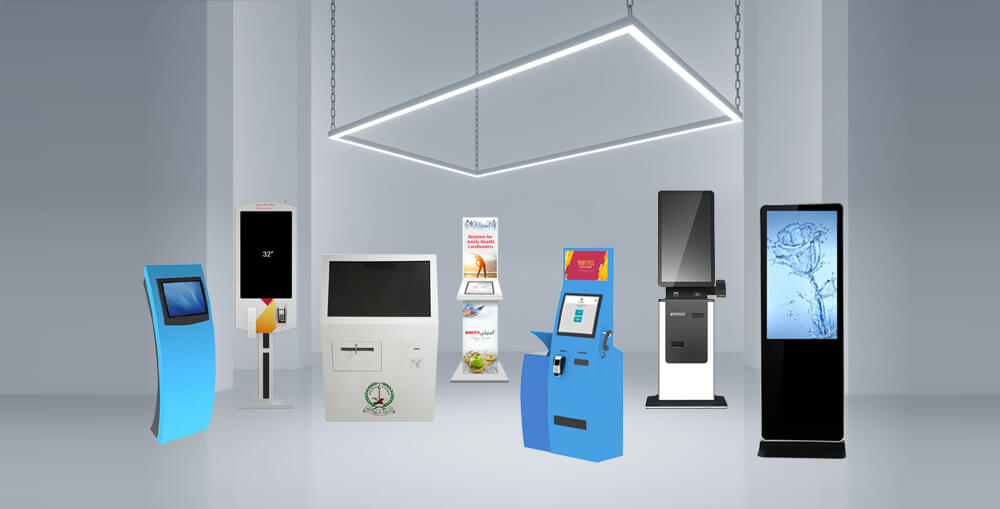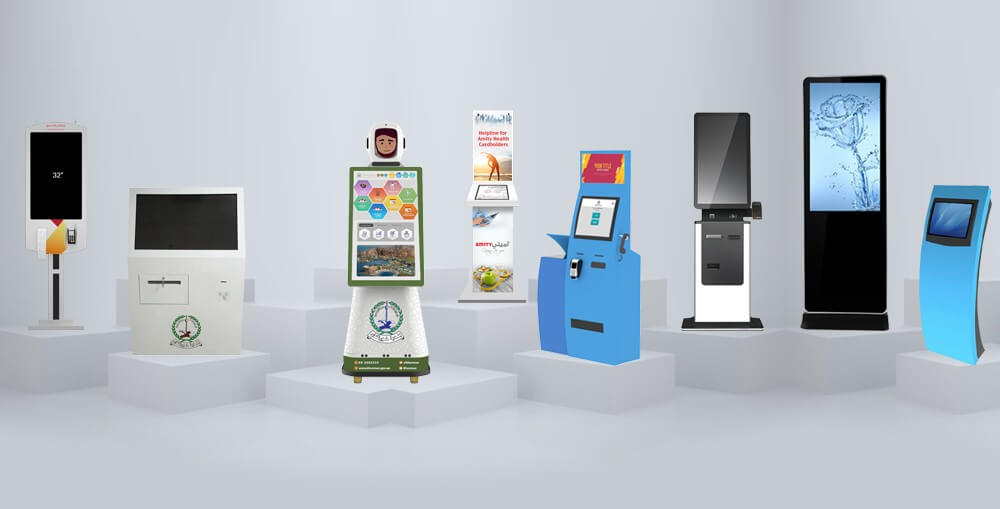In the dynamic landscape of today’s digital age, technology has become deeply integrated into everyday experiences, transforming the way businesses operate and how consumers interact with services and products. Among the most significant advancements shaping the retail and service sectors are interactive digital kiosks, often integrated with a queue management system to streamline customer flow. These kiosks, equipped with specialized hardware and software, offer users a range of functionalities, from accessing information and communication to facilitating commerce, entertainment, and education. Their presence in public spaces like shopping centers, banks, airports, hotels, and various other locations is not just a technological innovation—it is a transformation that is redefining customer engagement and business operations.
Understanding the Core Characteristics of Interactive Kiosks
Interactive digital kiosks are defined by several key characteristics that make them powerful tools for enhancing customer experiences and optimizing business processes. The most prominent feature is the touchscreen interface, which serves as the primary means of interaction between the user and the kiosk. This interface is designed to be intuitive and user-friendly, allowing customers to navigate menus, select options, and input data with ease. The interactivity of these kiosks is what differentiates them from traditional static displays or simple vending machines; they are dynamic systems that respond to user inputs, providing real-time information and personalized experiences.
In addition to the touchscreen, interactive kiosks are often equipped with a variety of other components that enhance their functionality. These may include printers for issuing receipts or tickets, scanners for reading barcodes or QR codes, cameras for facial recognition or customer identification, and payment modules that accept various forms of payment, including credit cards, mobile payments, and contactless transactions. The integration of these components allows kiosks to serve a wide range of purposes, from simple information dissemination to complex transaction processing.

The Strategic Role of Interactive Kiosks in Retail and Service Sectors
The adoption of interactive digital kiosks is driven by their ability to enhance customer capabilities and optimize business operations in several meaningful ways. These kiosks are not just convenient tools for customers; they are strategic assets that can significantly impact a business’s bottom line. Let’s explore how interactive kiosks are transforming the retail and service sectors.
1. Enhancing the Shopping Experience: Convenience and Information at Your Fingertips
Interactive kiosks are revolutionizing the shopping experience by making it more convenient, informative, and personalized. In a traditional retail environment, customers often rely on sales staff for information about products, services, and promotions. However, with the advent of kiosks, this dynamic is changing. Kiosks provide customers with instant access to detailed product information, including specifications, pricing, availability, and even customer reviews. This allows shoppers to make informed decisions without waiting for assistance, thereby improving the overall shopping experience.
Moreover, kiosks can offer information about additional store services, such as delivery options, product setup, extended warranties, credit programs, and current discounts. This level of service enhances the customer’s ability to make decisions that best suit their needs, leading to higher satisfaction and loyalty. For example, a customer interested in purchasing a large appliance might use a kiosk to compare models, check for delivery options, and apply for financing—all in a single session, without needing to interact with multiple staff members.
2. Expanding Reach and Customer Base: Reaching More Without Expanding Space
One of the most compelling advantages of interactive kiosks is their ability to expand a business’s reach and customer base without the need for additional physical space. By strategically placing kiosks within a store or in high-traffic areas, businesses can engage with more customers simultaneously, providing them with the information and services they need without requiring additional staff or larger premises.
This capability is particularly valuable in environments where space is limited or where customer traffic is highly variable. For example, during peak shopping seasons, kiosks can help manage the influx of customers by offering self-service options that reduce wait times and alleviate pressure on sales staff. In airports or train stations, where travelers are often in a hurry, kiosks can provide quick access to essential information, such as flight or train schedules, ticketing options, and directions, thus improving the overall efficiency of the facility.
3. Reducing Operational Costs: Efficiency Through Self-Service
Interactive kiosks also play a crucial role in reducing operational costs for businesses. As modern consumers become more adept at using technology to search for products, compare prices, and make purchasing decisions independently, the need for a large salesforce diminishes. Customers can now obtain the information they need directly from kiosks, freeing up staff to focus on more complex customer interactions and other critical tasks.
This shift not only reduces labor costs but also improves operational efficiency. For example, in a quick-service restaurant (QSR), kiosks can be used for order placement and payment processing, reducing the need for cashier staff and allowing the restaurant to serve more customers in less time. Similarly, in retail environments, kiosks can handle routine inquiries, such as product availability or store hours, reducing the number of questions directed at staff and allowing them to concentrate on higher-value activities.
4. Optimizing Business Processes: Streamlining Operations and Enhancing Efficiency
Interactive kiosks are multifunctional tools that can significantly streamline business processes. By allowing users to perform various tasks—such as submitting job applications, processing loan requests, issuing gift certificates, or signing up for loyalty programs—kiosks automate processes that would otherwise require manual input from staff. This automation not only speeds up operations but also reduces the likelihood of errors, as the kiosk’s software ensures that information is processed accurately and consistently.
In the banking sector, for instance, kiosks can be used to handle routine transactions, such as account inquiries, bill payments, and check deposits, freeing up tellers to assist customers with more complex financial needs. In the hospitality industry, kiosks can expedite the check-in and check-out processes, allowing guests to bypass the front desk and go directly to their rooms, thereby enhancing the guest experience and improving hotel efficiency.
5. Conducting Marketing Research: Gaining Insights Through User Interaction
One of the often-overlooked benefits of interactive kiosks is their potential to serve as powerful tools for marketing research. By tracking user interactions, businesses can gather valuable data on customer preferences, behaviors, and purchasing patterns. This data can then be analyzed to gain insights into what products or services are most popular, which promotions are most effective, and how customers navigate the kiosk’s interface.
These insights can inform a wide range of business decisions, from product development to marketing strategy. For example, a retail chain might use data from its kiosks to identify regional differences in product preferences, allowing it to tailor its inventory and promotions to better meet local demand. Similarly, a restaurant chain might analyze kiosk data to determine which menu items are most popular during certain times of the day, enabling it to optimize its offerings and pricing strategy.
6. Encouraging Higher Spending: Upselling and Cross-Selling Opportunities
Kiosks are also highly effective at encouraging customers to spend more by offering upselling and cross-selling opportunities. Through their interactive displays, kiosks can present customers with personalized recommendations, suggest complementary products, or highlight special promotions. For example, a customer purchasing a smartphone might be prompted by the kiosk to also consider purchasing accessories, such as a case or screen protector, or to sign up for an extended warranty plan.
This capability to influence purchasing decisions in real-time can significantly increase average transaction values and boost overall sales. Furthermore, because these recommendations are based on the customer’s specific interactions with the kiosk, they are more likely to be relevant and compelling, leading to higher conversion rates.

Empowering Customers Through Self-Service and Enhanced Decision-Making
Interactive kiosks empower customers by giving them greater control over their purchasing decisions and enhancing their overall shopping experience. With access to comprehensive product information, customers can browse, compare, and select products at their own pace, without feeling pressured by sales staff. This autonomy is particularly appealing to modern consumers, who increasingly prefer self-service options that allow them to shop on their own terms.
For instance, a customer shopping for clothing can use a kiosk to check for available sizes, explore alternative colors, and read reviews from other customers. If the desired item is not available in-store, the kiosk can provide information on when the product is expected to arrive or direct the customer to another location where it is in stock. In some cases, the customer may even be able to place a pre-order through the kiosk, ensuring they do not leave the store empty-handed.
This level of service not only improves customer satisfaction but also helps businesses retain customers by preventing lost sales. Additionally, the ability to access and compare product information in real-time allows customers to make more informed decisions, which can lead to higher satisfaction and fewer returns or exchanges.

Generating Additional Revenue Through Advertising and Partnerships
In addition to their primary functions, interactive kiosks offer businesses the opportunity to generate additional revenue through advertising. By displaying ads and promotional content from third-party companies, kiosks can serve as digital billboards that reach a captive audience. This advertising space can be sold to other businesses, providing a steady stream of income that offsets the cost of deploying and maintaining the kiosks.
Moreover, the content displayed on the kiosks can be tailored to the specific audience or location, making the advertising more relevant and effective. For example, a kiosk located in a mall might display ads for nearby stores, while a kiosk in an airport could promote travel-related services, such as car rentals or hotel bookings. This targeted approach ensures that the ads are seen by the most relevant audience, increasing the likelihood of engagement and conversion.
Partnerships with other businesses can also be facilitated through kiosks, allowing companies to cross-promote products or services. For instance, a retail store might partner with a local restaurant to offer special discounts to customers who use the kiosk to make a purchase. These partnerships can enhance the customer experience by providing added value, while also driving traffic to both businesses.
Shifting the Role of Retail Staff: Focus on High-Value Interactions
As interactive kiosks take over routine tasks traditionally handled by retail staff, the role of employees is evolving. Rather than spending time answering basic questions or processing simple transactions, staff can now focus on high-value interactions that require a personal touch. This shift allows businesses to make better use of their human resources, ensuring that employees are engaged in activities that directly contribute to customer satisfaction and business success.
For example, in a luxury retail environment, sales associates can spend more time building relationships with customers, offering personalized advice, and providing a level of service that cannot be replicated by a kiosk. In a healthcare setting, kiosks can handle patient check-ins and basic information gathering, freeing up medical staff to focus on providing care and addressing more complex patient needs.
By leveraging kiosks to handle routine tasks, businesses can also improve employee satisfaction, as staff are no longer bogged down by repetitive and mundane tasks. This can lead to higher employee retention rates and a more motivated workforce, ultimately benefiting both the employees and the business.
The Future of Interactive Kiosks: Innovations and Emerging Trends
As technology continues to evolve, so too will the capabilities and applications of interactive kiosks. Emerging trends in artificial intelligence (AI), machine learning, and the Internet of Things (IoT) are likely to drive the next wave of innovation in this space, enabling kiosks to become even more intelligent, personalized, and connected.
1. Artificial Intelligence and Machine Learning
AI and machine learning technologies are already beginning to be integrated into interactive kiosks, enabling them to provide more personalized and context-aware experiences. For example, AI-powered kiosks can analyze customer data to offer tailored recommendations, anticipate customer needs, and even predict future behavior based on past interactions. Machine learning algorithms can also help kiosks improve their performance over time by learning from user interactions and adjusting their responses accordingly.
In the future, we can expect to see kiosks that are capable of recognizing individual customers through facial recognition or mobile device integration, allowing them to offer a truly personalized experience from the moment the customer approaches the kiosk. These advancements will further enhance the customer experience, making kiosks an even more valuable tool for businesses.
2. The Internet of Things and Connected Kiosks
The integration of IoT technology into interactive kiosks will enable them to communicate with other connected devices and systems, creating a more seamless and integrated experience for users. For example, a kiosk in a smart retail environment might be able to communicate with inventory management systems to provide real-time stock updates, or with a customer’s mobile device to offer personalized promotions based on their location within the store.
IoT-enabled kiosks could also play a role in smart cities, where they might be used to provide information about public transportation, local events, or emergency services. By connecting to other smart city infrastructure, kiosks could offer real-time updates and alerts, helping to improve the overall quality of life for residents and visitors.
3. Voice Recognition and Natural Language Processing
As voice recognition and natural language processing (NLP) technologies become more advanced, we can expect to see interactive kiosks that are capable of understanding and responding to spoken commands. This will make kiosks even more accessible to users, particularly those who may have difficulty using a touchscreen interface, such as the elderly or people with disabilities.
Voice-enabled kiosks could also enhance the customer experience by allowing users to interact with the kiosk in a more natural and intuitive way. For example, a customer in a busy airport might simply ask the kiosk for directions to their gate, or a shopper in a large department store might ask the kiosk to help them find a specific product.
Conclusion: A Strategic Investment in the Future of Commerce
Interactive digital kiosks are more than just a technological innovation; they represent a strategic investment in the future of commerce. By enhancing the customer experience, optimizing business operations, and providing new revenue streams, kiosks have the potential to drive significant growth for businesses in a wide range of industries.
As technology continues to advance, the role of kiosks in retail, service, and public spaces is likely to expand even further. Businesses that embrace these innovations early on will be well-positioned to capitalize on the benefits they offer, from increased customer engagement and satisfaction to improved operational efficiency and profitability.
In a world where convenience, speed, and personalization are increasingly important to consumers, interactive kiosks offer a powerful solution that can help businesses meet these demands while staying ahead of the competition. As such, the adoption of interactive digital kiosks should be seen not just as a technological upgrade, but as a critical component of a forward-thinking business strategy.

Hiking addict, shiba-inu lover, ukulelist, Mad Men fan and fullstack designer. Acting at the junction of modernism and sustainability to express ideas through design. I prefer clear logic to decoration.


